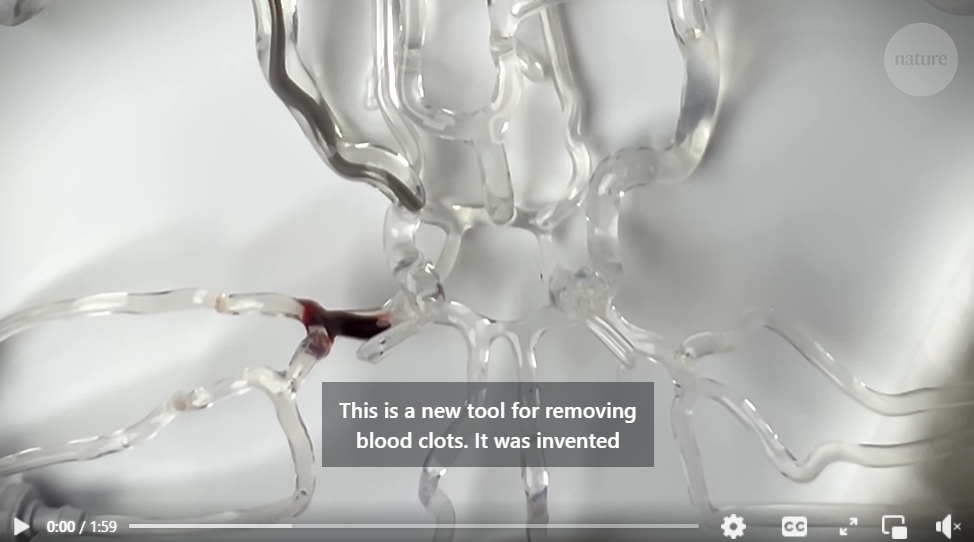Clot-induced blockage in arteries or veins can cause severe medical conditions. Mechanical thrombectomy is a minimally invasive technique used to treat ischaemic stroke, myocardial infarction, pulmonary embolism and peripheral vascular disease by removing clots through aspiration, stent retriever or cutting mechanisms. However, current mechanical thrombectomy methods fail to remove clots in 10–30% of patients, especially in the case of large, fibrin-rich clots. These methods can also rupture and fragment clots, causing distal emboli and poor outcomes.
To overcome these challenges, we develop the milli-spinner thrombectomy, which uses a simple yet innovative mechanics concept to modify the clot’s microstructure, facilitating its removal. The milli-spinner works by mechanically densifying the clot’s fibrin network and releasing red blood cells through spinning-induced compression and shear forces. It can shrink the clot volume by 95% for easy and fast removal. In vitro tests in pulmonary and cerebral artery flow models and in vivo experiments in swine models demonstrate that the milli-spinner achieves ultrafast clot debulking and high-fidelity revascularization, outperforming aspiration thrombectomy.

